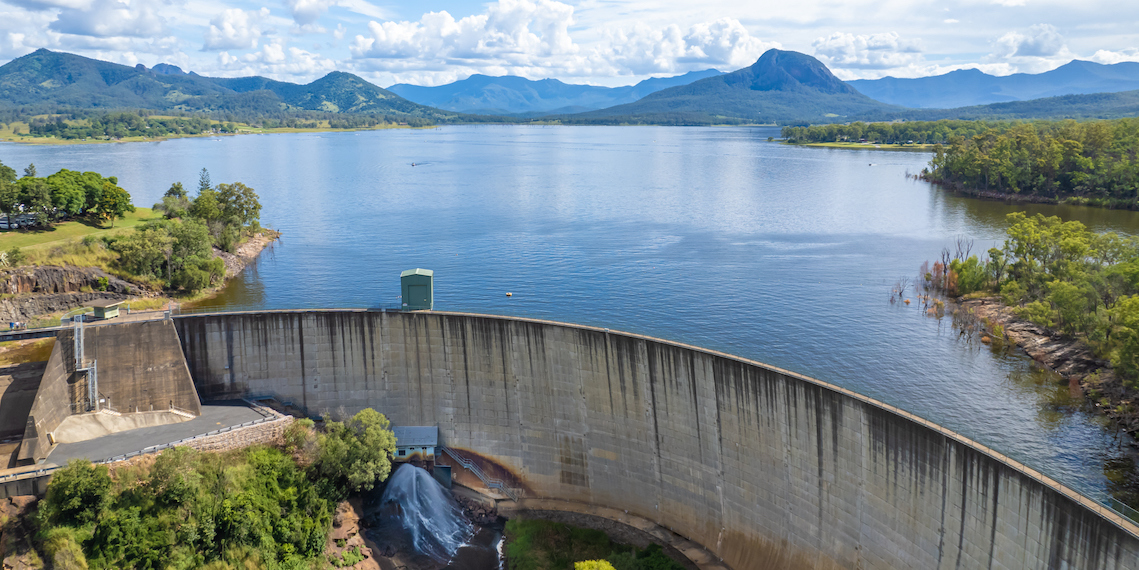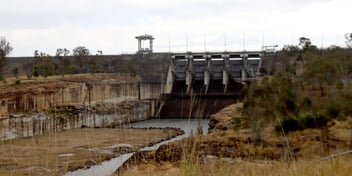Retrofitting dams for hydropower offers renewables opportunity

Retrofitting dams for hydropower offers huge opportunities to bolster renewable energy markets, according to one dam expert who says the time has come to consider doing more with existing water infrastructure to produce greater benefits.
AECOM Global Dams Lead Dennis Hogan recently spoke at the WWF Nature Hub event as part of the 2023 UN Water Conference and Water Week in New York about how dam removal, hydropower retrofits and rehabilitation can help to mitigate the negative impacts of climate change.
“Led in part by the Low Impact Hydropower Institute, a discussion has developed in the US around dam removal, retrofitting and rehabilitation in pursuit of better outcomes for environments and communities,” Hogan said.
“But a lot of these ideas translate to the Australian context, where there are consulting engineers, constructors, regulators, environmentalists, community groups and First Nations organisations talking about dams, and where dams can be removed.
“For dams that we need to keep, due to their use for water supply and flood protection, there are also discussions around how we can find ways to reduce riparian impact, or think more about how we can better utilise these assets to produce positive outcomes.”
With dam rehabilitation receiving more attention, particularly as safety regulations and upgrade planning continue over the coming decades, Hogan said there is a lot of scope to consider how hydropower retrofits can be introduced to these assets.
“We can keep these dams and upgrade them, but we can also consider retrofitting with hydropower at the same time. It is certainly something that needs to be thought through on a case-by-case basis, but there is a lot of opportunity there,” he said.
“There are a lot of dams without hydro, and we need to be considering this opportunity, especially with the age of current infrastructure. A lot of dams are being examined very closely now, in terms of risk and public health and safety.
“If we are going to embark on rehabilitation measures for a dam, it makes sense to consider how to use that dam for more purposes, beyond the usual water storage, supply, flood control or recreation.
“In the US we have 90,000 dams, but only 3% of them have hydropower. This doesn't make much sense to me. The potential energy of the water is there, and it is always there. We just need to capture it.”
Capturing benefits
As renewable energy markets continue to develop, the introduction of hydropower generation in the right locations can offer key benefits, Hogan said.
“Part of the power of hydro is that the water we need to produce this renewable energy is already sitting there in our dams, but it also has the ability to provide grid stabilisation and load management,” he said.
“In my opinion, Australia is perfect for microgrids, which could become a part of the energy portfolio, along with solar and wind. Hydropower helped build modern Australia, it’s been around for quite a while. It is low impact compared to other energies and slots right in with renewables.”
While pumped storage projects can be large-scale, like the Snowy Hydro Scheme, Hogan said retrofitting existing dams with hydropower can be of great benefit to smaller communities, too.
“Old mine pits present an opportunity to produce renewables through hydro without having to touch a river system, while also remediating industrial sites. Ideally, you’d be using solar or wind energy to pump up, and then run the water down to produce the energy,” he said.
“But existing dams are already well positioned to produce hydropower, it’s just about making adjustments to capture that power. We already have hydropower mechanisms that run on irrigation canals with only four feet of hydrostatic head.
“This isn’t going to be enough to power a whole town, but there is potential there to at least produce some renewable energy that can offset local demand. And if we are committed to conserving energy, every little bit counts.”
Better technology
Hogan said small-scale hydropower retrofits have become highly viable due to advances in turbine technology, with retrofitting options now far less invasive and expensive.
“Turbine technology has advanced greatly in the past 20 years. Fifty years ago, we built all these giant dams with giant turbines, but now we have very powerful turbines that can fit inside a six-inch pipe,” he said.
“The economics, operation and market impacts of these retrofits are a further conversation. But the very basis of utilising water and turbines to create energy is there. We can start by looking at how much power we can generate from dams and think further about offsets and incentives.”
In terms of prioritising the right dams to retrofit, Hogan said it’s important to assess output capacity, but also to consider dam structure and the environment within which each dam is located.
“Every dam is different, including size and capacity. When water flows through a turbine, there’s a potential amount of energy there that can be produced. The greater drop in height across the dam, the more energy you are going to be able to generate,” he said.
“But the potential of each dam is also about the volume of discharge. So big dams with a lot of water moving through them are likely going to be the most viable and productive sites.”
A lot of dams have low-level outlets, which involve a pipe through the base of the dam, and Hogan said these assets are ideal for the installation of turbines.
“There is minimal impact that has to occur in these types of sites. Hydropower projects can be huge, powerhouse initiatives. But they can also be about simply attaching a turbine to outlets and piping that’s already there,” he said.
Continued conversation
Hogan said participating in the conversation around dam retrofits or removals is important as environmental issues and community concerns continue to mount.
“As a dam engineer, I’m a concrete foundations, build-big-things kind of person,” he said.
“However, I am participating in this conversation because I recognise that we can take dams down that aren't needed and restore the habitat, or at least help mitigate the impacts of climate change by doing more with the dams we need to keep.
“But retrofitting or removing dams to produce better outcomes needs to be a cross-disciplinary effort, involving a range of different expertise, with everyone working together.”
While working through the removal of dams that are no longer needed can be complex, Hogan said there are plenty of examples in the US where these projects have been completed successfully.
“In the US, there are hundreds of dams that have been removed, and thousands of miles of streams and rivers that have been rehabilitated,” he said.
“And I am talking about large-scale, concrete-arch dams that have been taken out. They were installed for old industries, but communities change and, in many cases, people want environments to revert back to their original state.
“A lot of communities are in conversation about this. And so it’s important for dam managers and engineers to be thinking and talking about it, too.”


